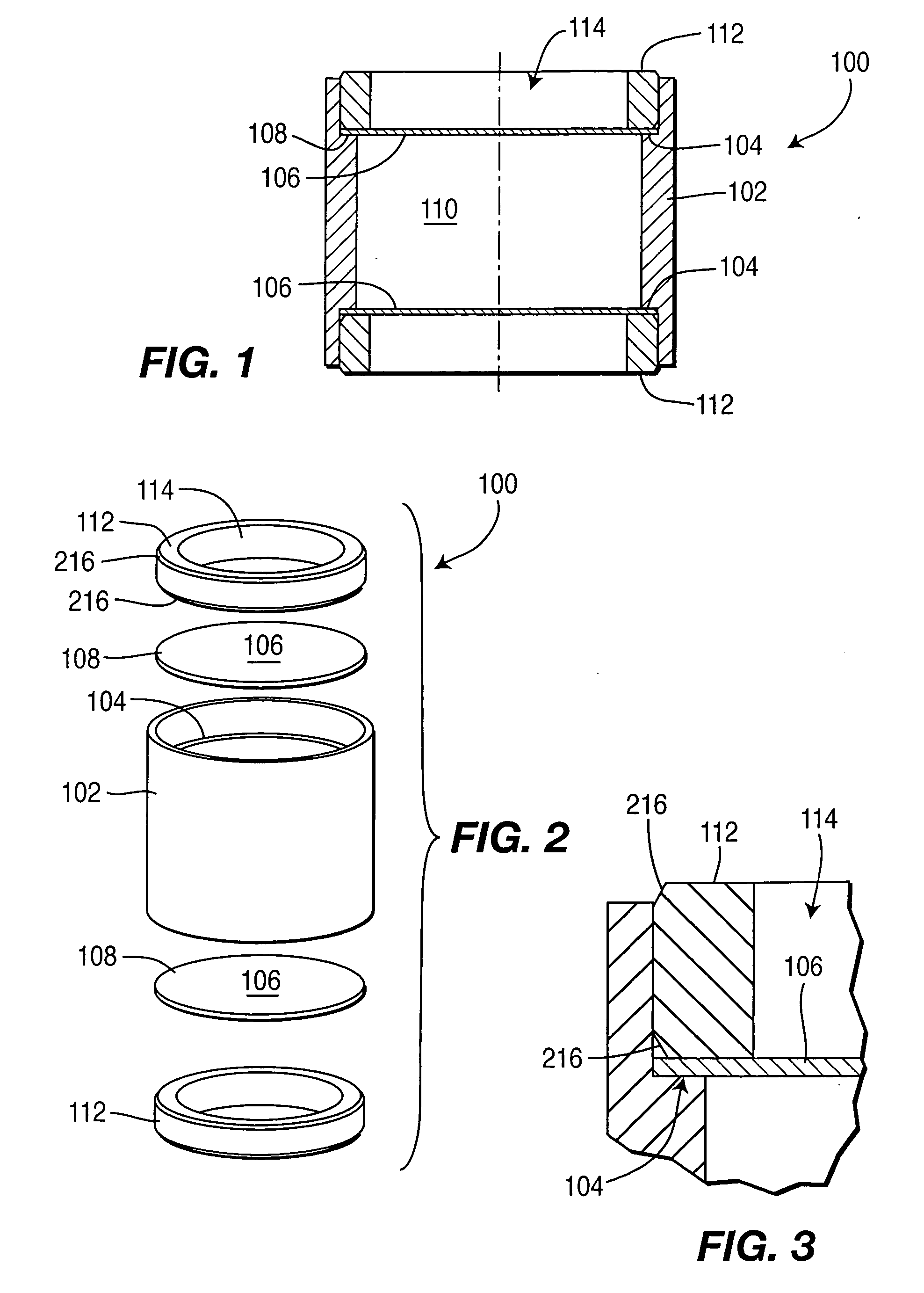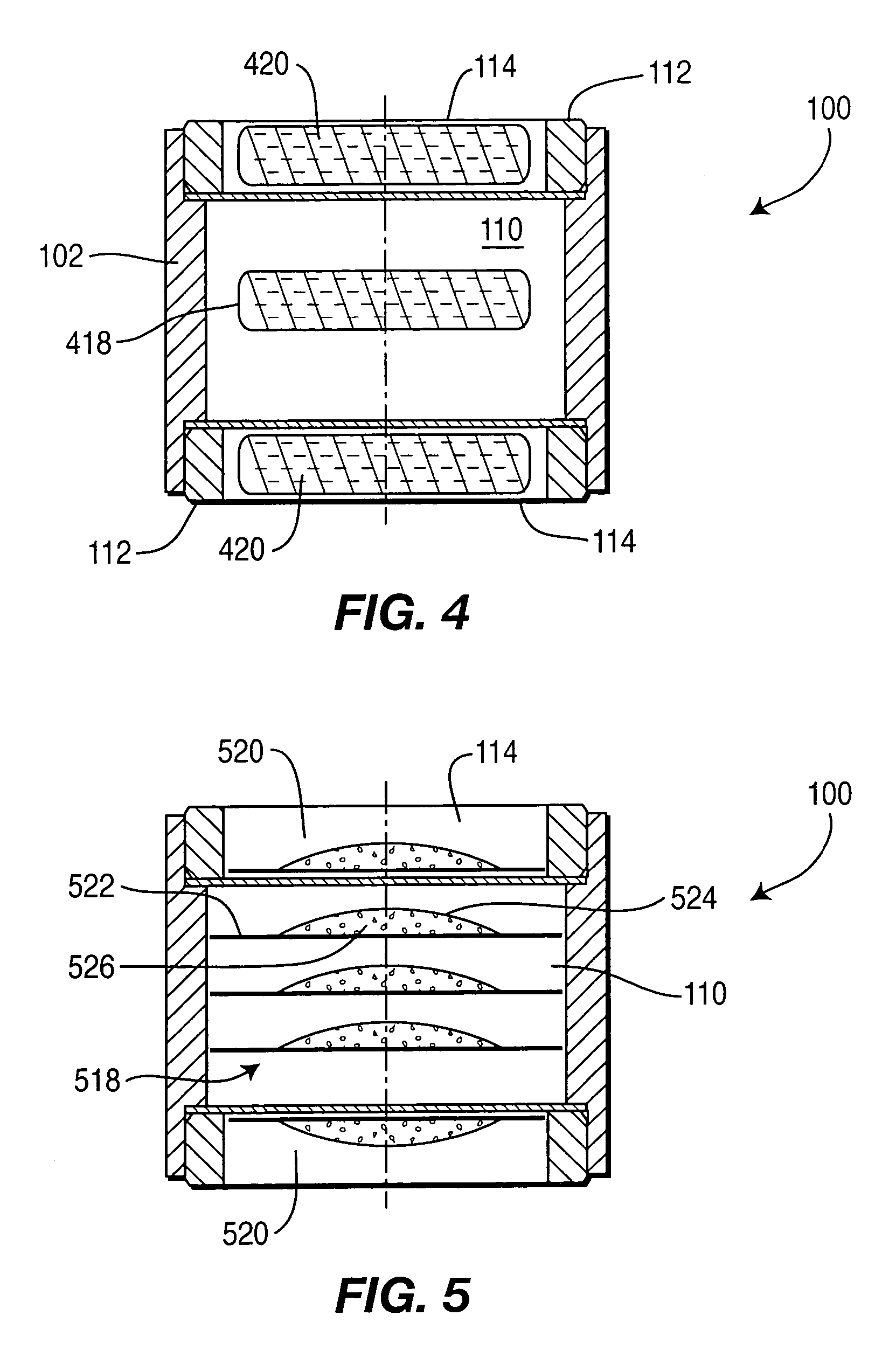Controlled-release drug delivery system
a drug delivery and controlled release technology, applied in the direction of drug delivery mechanism, pill delivery, medical preparations, etc., can solve the problems of reduced drug release rate, difficult to achieve ideal, and many controlled-release dosage forms are subject to structural integrity problems
- Summary
- Abstract
- Description
- Claims
- Application Information
AI Technical Summary
Benefits of technology
Problems solved by technology
Method used
Image
Examples
example i
Delayed Release
This Example provides an illustration of delayed drug release from drug delivery system 100 into simulated intestinal fluid. Results are shown for two lots of tablets, both containing 12.5 milligrams of active ingredient but varying in the proportions of the excipients listed above. The controlled-release layers had a thickness of about 50 microns. For this Example, drug delivery system 100 was configured with a single tablet between the controlled release layers and no immediate-release components. Plots 602 and 604 in FIG. 6 show that drug delivery is delayed 3.5 hours and 4 hours after “administration,” respectively, for the two lots of tablets.
example ii
Sustained Release
This Example provides an illustration of sustained release from drug delivery system 100. Results are shown for two variations of drug delivery system 100. In one variation, drug delivery system 100 includes two tablets each containing 5 milligrams of active ingredient. One of the tablets served as an immediate-release component (i.e., it was on the exposed side of the controlled-release layers) and the second tablet served as a controlled-release component (i.e., it was disposed between the controlled-release layers). The controlled-release layers had a thickness of about 250 microns and the medium was 0.01 N hydrochloric acid.
Plots 706A, 706B, and 706C in FIG. 7 depict results for three samples of this variation of system 100. The effects of the immediate and controlled-release components can be seen. In particular, plots 706A, 706B, and 706C shows an initial relatively rapid release of active ingredient (i.e., in the first fifteen to thirty minutes) and then ...
example iii
Immediat Release, then Delay, then Sustained Release
This Example illustrates a release profile that is characterized by immediate release, then a period of delay, and a period of sustained release of active ingredient following the delay. Results are shown for release into simulated intestinal fluid. For this Example, drug delivery system 100 included one immediate-release tablet and one controlled-release tablet, both containing 5 milligrams of active ingredient.
Plots 1012A and 1012B in FIG. 10 depict the release profile for two lots of active ingredient into simulated intestinal fluid. The release profiles show that in the first few minutes, most of the immediate release tablet is dissolved. For the next hour and twenty minutes, no further active ingredient is released. After this period of delay, a period of sustained release begins and continues for the next 6 hours and thirty minutes.
PUM
 Login to View More
Login to View More Abstract
Description
Claims
Application Information
 Login to View More
Login to View More - R&D
- Intellectual Property
- Life Sciences
- Materials
- Tech Scout
- Unparalleled Data Quality
- Higher Quality Content
- 60% Fewer Hallucinations
Browse by: Latest US Patents, China's latest patents, Technical Efficacy Thesaurus, Application Domain, Technology Topic, Popular Technical Reports.
© 2025 PatSnap. All rights reserved.Legal|Privacy policy|Modern Slavery Act Transparency Statement|Sitemap|About US| Contact US: help@patsnap.com



